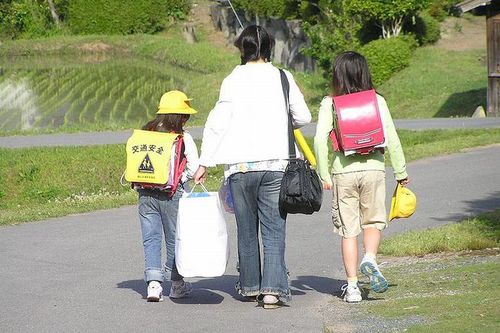April 24, 2015
Nara City Enacts Child-Friendly City Ordinance
Keywords: Education Well-Being

Image by Doctor Autumnal Sky Some Rights Reserved.
Nara City in Nara Prefecture established the Child-friendly City Development Ordinance on December. 18, 2014, based on the notion of Child Friendly Cities (CFC) advocated by the United Nations Children's Fund (UNICEF) in 1996. Nara functioned as the ancient capital of Japan, called Heijokyo, in the eighth century, and hosts many cultural properties registered as World Heritage Sites. This article introduces the city's views on children toward the future, and its efforts to realize this vision.
The purpose of the ordinance is to let the children in Nara live happily and grow with dreams and hopes into the future. It also aims to create a city that allows children to participate along with adults. The ideas are basically taken from Japan's Constitution and the UN's Convention on the Rights of the Child enacted in 1989.
Nara established a committee to study ordinances in 2012 and held 17 separate discussions. In addition, the city held 6 workshops for children in 2012 and 5 workshops in 2013. Children between the ages of 10 and 17 living in the city were selected through open recruitment, and held talks with college students and committee members to make the ordinance deliberations more fruitful.
Children expressed their views proactively and their ideas were reflected in the ordinance. Their suggestions included: "Please listen to the ideas of children with variety of backgrounds;" "Please make school roads wider to ensure safety;" and "Please have a system to assess whether children's opinions are based on fact."
Specifically, the Nara Child Conference will be set up to provide children with opportunities to participate and raise issues. The conference will be operated by children through voluntary initiatives, allowing them to submit opinions to the mayor (Article 12).
Adults, including city officials, parents, local residents and educational facility staff, as well as school personnel, are asked to make efforts to create safe environments for children, to protect them from such dangers as crime, traffic accidents and natural disasters (Article 16). They are also asked to create places where children can develop themselves through contact with nature, a variety of play experiences and interactions with other children (Article 17).
The ordinance also stipulates the role of businesses, defining the importance of preparing work environments that allow employees to balance work with child-rearing (Article 10). Other statements in the 21 articles include public support for children with disabilities and for single-parent families, as well as measures dealing with abuse or bullying.
The activities of Nara City based on the promotion of a child-friendly city may lead to the creation of community where people living in or visiting the city can equally enjoy the friendly atmosphere. The ordinance is set to be enforced from April 1, 2016.
In Japan, Kawasaki City in Kanagawa Prefecture was the first city to establish an ordinance on children's rights in 2000. Following Nara, other municipalities are expected to promote similar initiatives.
Related
"JFS Newsletter"
- 'What Are the Roles of Zoos Today?' - Interview with Director of the Popular Asahiyama Zoo
- 15-Year Integrated Forest Environment Education in Shimokawa, Hokkaido to Support Sustainable Forest Management
- Fifth Contest to Award Excellent Environmental and Social Practices by Junior High, High School Students
- Locally Produced Food in School Lunches----A Challenge by Nyuzen, Japan
- Supporting 'Good Companies' that Create Future Society


